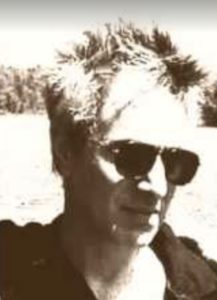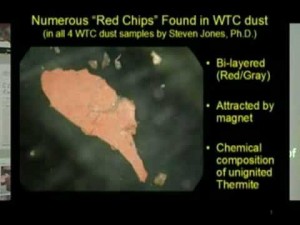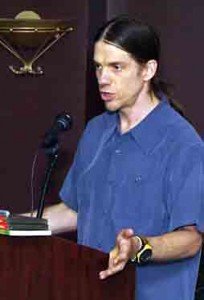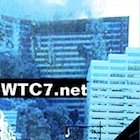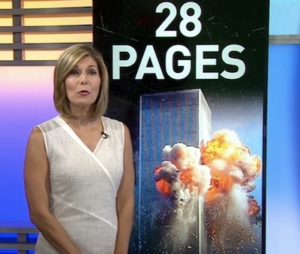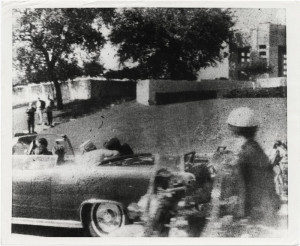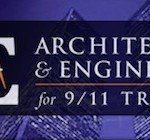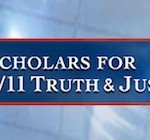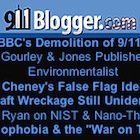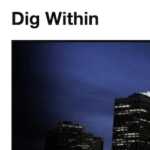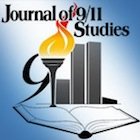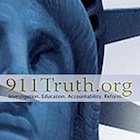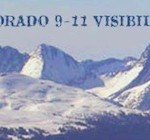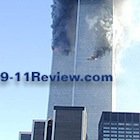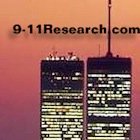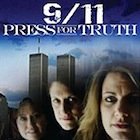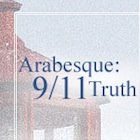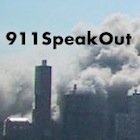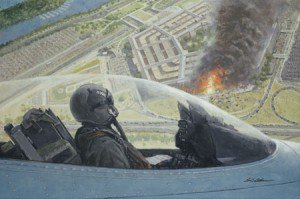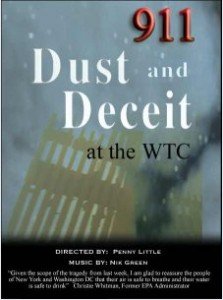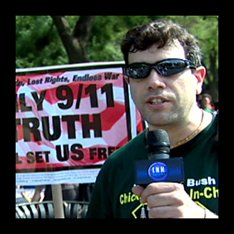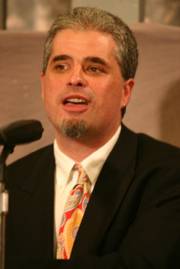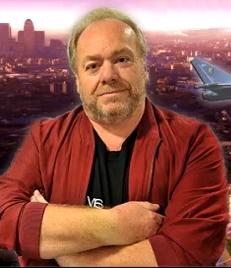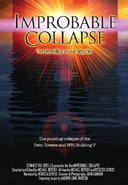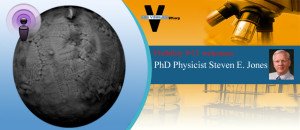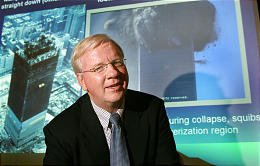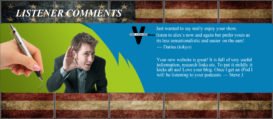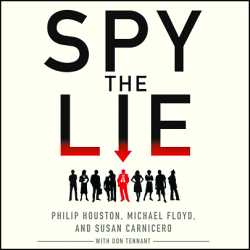 A recent book written by veteran CIA officers describes how deception can be identified by simple observational techniques. In Spy the Lie: Former CIA Officers Teach You How to Detect Deception, authors Philip Houston, Michael Floyd, and Susan Carnicero outline a number of verbal and visual behavioral clues that are demonstrated by people who lie in response to questioning. These proven techniques for recognizing deception can be easily applied to see that U.S. leaders have lied repeatedly about the attacks of 9/11.
A recent book written by veteran CIA officers describes how deception can be identified by simple observational techniques. In Spy the Lie: Former CIA Officers Teach You How to Detect Deception, authors Philip Houston, Michael Floyd, and Susan Carnicero outline a number of verbal and visual behavioral clues that are demonstrated by people who lie in response to questioning. These proven techniques for recognizing deception can be easily applied to see that U.S. leaders have lied repeatedly about the attacks of 9/11.
The authors make clear that there are two important guidelines to employ when analyzing these verbal and visual clues. First, timing is important. Due to the fact that people think ten times faster than they speak, the behaviors are more important when the first one occurs within five seconds of the question. Secondly, when the behavioral clues occur in groups of two or more, called clusters, they are more indicative of deception on the part of the person being questioned. The more clues exhibited, the more clear the deception becomes.
Let’s take a look at some examples.
In a December 15, 2001 press conference, President George W. Bush was asked an unexpected question about 9/11. In a remarkably delayed response, Bush exhibited both a verbal clue for deception, the failure to answer, and a visual clue called an anchor-point movement. The latter is when the anxiety raised by the question causes the person questioned to shift his body to relieve physical instability. As Bush replied, he shook his head, moved his hands, and seemed to be shuffling his feet uncomfortably.
Reporter: Do you agree or disagree with the RNC that [a question of your advanced knowledge of 9/11] borders on political hate speech?
Bush: Uh, yeah, there’s time for politics and, uh, you know… time for politics and, uh… I, uh, it’s an absurd insinuation.”
If the reporter had been a CIA interrogator, like any of the three authors of the book, this response would have raised an immediate red flag that the issue needed further examination.
In April 2004, Bush was asked a question about why he could only meet with the 9/11 Commission if Vice President Cheney was with him. He responded in a stuttering, repetitive fashion that demonstrated the “failure to answer” clue as well as something called non-specific denial, in which the question is refuted with unrelated verbiage. As Bush repeated his diversionary answer, he also smiled—another indication of deception when dealing with any serious subject matter.
Reporter: “Why are you and the vice president insisting on appearing together before the 9/11 Commission?”
Bush: “Because the 9/11 Commission wants to ask us questions. That’s why we’re meeting and I look forward to meeting with them and answering their questions.”
Reporter: “My question was why are you appearing together, rather than separately, which was their request?”
Bush: “Because it’s a good chance for both of us to answer questions, that the 9/11 Commission is, uh, looking forward to asking us, and I’m looking forward to answering them.”
Not long after Bush and Cheney finally agreed to their unrecorded, secretive interview with 9/11 commission members, Bush’s national security advisor Condoleezza Rice gave testimony under oath. In that testimony, she demonstrated at least six of the CIA’s verbal clues to deception including isolated denial, selective memory, an overly specific answer, and a process or procedural response. Rice was also seen going into attack mode, responding to Commissioner Richard Ben-Veniste with, “I believe you had access,” and using inconsistent statements. She said that a presidential brief was titled “Bin Laden determined to strike inside U.S.” and yet also that no warnings of strikes inside the U.S. were received.
In addition to these highly deceptive behaviors, Rice gave a huge hint in her testimony that exemplifies something the book calls the “truth in the lie.” When Ben-Veniste asked her about Al Qaeda cells in the United States. She said,
Rice: “I remember very well that the president was aware that there were issues inside the United States. He talked to people about this. But I don’t remember the Al Qaeda cells as being something that we were told we needed to do something about.”
This extended answer suggested that the White House knew about Al Qaeda cells operating in the United States but that Rice and others were expected to do nothing about them. Ben-Veniste did not pursue the question further. This is not surprising given other lines of questioning in which Ben-Veniste engaged. Here’s an example with General Michael Canavan, who was supposed to be the “hijack coordinator” on 9/11—the one person most responsible for preventing, and initially responding to, the hijackings.
Ben-Vensite: What is your understanding of the first time FAA notified NORAD of the fact that this was a possible hijack or that it had deviated from course, or that there was some anomaly about Flight 77 in the context of everything else that was going on that day?
Canavan: Here’s my answer—and it’s not to duck the question. Number one, I was visiting the airport in San Juan that day when this happened. That was a CADEX airport, and I was down there also to remove someone down there that was in a key position. So when 9/11 happened, that’s where I was. I was able to get back to Washington that evening on a special flight from the Army back from San Juan, back to Washington. So everything that transpired that day in terms of times, I have to—and I have no information on that now, because when I got back we weren’t—that wasn’t the issue at the time. We were— when I got back it was, What are we going to do over the next 48 hours to strengthen what just happened?
Although video is not available for Canavan’s testimony, it’s clear that he was using deceptive verbal behaviors. He failed to answer the actual question, he engaged in perception qualifiers and an overly specific response, and he gave non-answer statements. Because Ben-Veniste immediately dropped the question it is unknown, to this day, who was serving in the critical role of hijack coordinator on 9/11.
There are many more examples of deceptive answers from U.S. leaders regarding 9/11. When asked why an outline was created for the 9/11 Commission Report before the investigation began, Chairman Thomas Kean immediately ran away and went into attack mode. When asked about the CIA’s tracking of two of the alleged hijackers, CIA director George Tenet, who was undoubtedly trained in detecting deception, demonstrated many of the CIA’s clues that he was being deceptive.
One more example is instructive. This involves John Gross, who was the author of both the most critical FEMA World Trade Center (WTC) report and the most critical WTC report from the National Institute of Standards and Technology. When asked a question during a presentation he was giving, Gross responded with multiple behaviors that the CIA would find deceptive.
Questioner: “I’m curious about the pools of molten steel that were found in the bottom of the towers.”
Gross (Anchor-point movements, non-answer statement, going into attack mode): “I am, I am too…. tell me about it. Have you seen it?
Questioner: “Well, not personally but eyewitnesses there found huge pools of molten steel beneath the towers and, uh, scientists, some scientists, think that the collapse of the buildings could [sic] have melted all that steel. And a physics professor, Steven Jones, found evidence of a thermite residue, which would explain how the buildings collapsed by means of pre-planted explosives. So have you analyzed the steel for any of those residues?
Gross (Reluctance to answer, Anchor-point movements): “First of all, let’s go back to your basic premise that there was, uh, a pool of molten steel. Um, I know of absolutely nobody, no eyewitnesses, who have said so, nobody has produced it. I was on the site, I was on the steelyards, so I can’t, I don’t know that that’s so.”
When further questioned about the collapse of WTC Building 7, Gross made inconsistent statements and engaged in hand-to-face activity, another two of the deceptive behaviors noted by the CIA. This is not surprising to people who have studied events at the WTC, however, because Gross would have needed to be grossly negligent in his observance of evidence to have not known about the molten metal at the WTCsite.
As seen above, the 9/11 Commission hearings and other statements by 9/11 investigation leaders provide a treasure trove of opportunities for people to practice detecting deception. Of course, the 9/11 Commission Report demonstrates many of the same clues for deception that CIA officers would highlight. Its lies of omission are many and its reliance on deceptive language like “we found no evidence” is another clue.
Interestingly, the authors of Spy the Lie introduce their book by recalling the 9/11 attacks in a way that suggests that their deception-identifying skills are needed to avoid such tragedies. Yet these three experts on deception don’t question the official narrative of 9/11 at all and apparently have never seen any evidence for deception in that narrative or its origins. This fact may be the result of extreme bias—with the CIA officers unable to question their own agency. Or maybe it exemplifies a high level of self-deception, perhaps suggesting a sequel to the book.
In any case, the official account of 9/11 continues to provide a most powerful way to see just how much people deceive each other and themselves. When it comes to 9/11, experts on scientific fraud can’t see themost glaring example, journalists can’t see the most obvious examples of negligent reporting, and the CIA’s most skilled detectors of deception can’t see when they are deceived. Since many of us can see these things, we should work harder to reveal the truth because deception is at the root of many of the world’s problems.
Kevin Ryan blogs at Dig Within.
